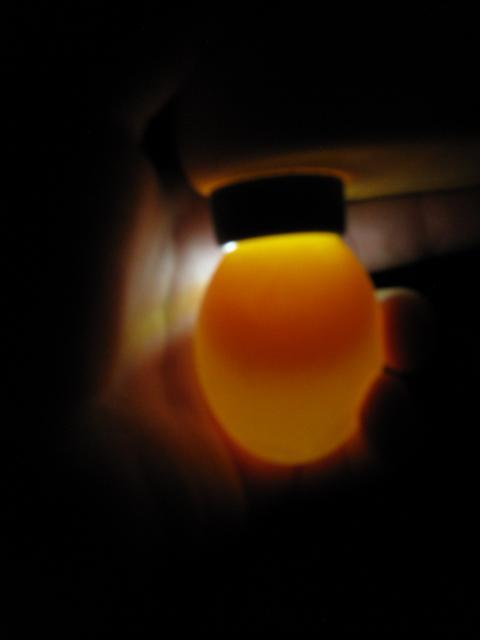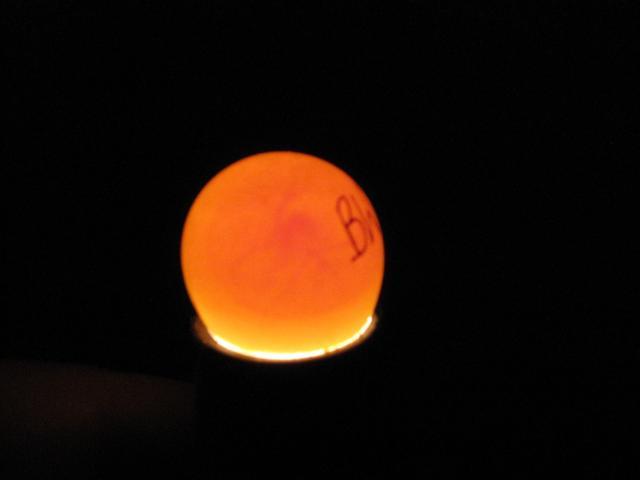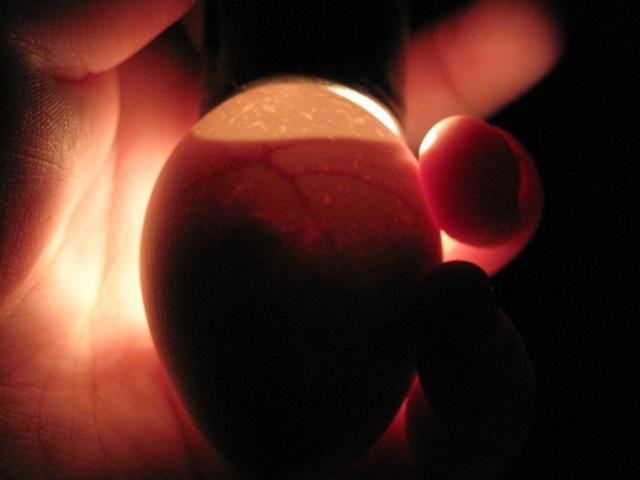Hello!
I've been playing around with a Little Giant still air incubator for a few months now. I gave up on candling my Button Quail eggs after I realized that I didn't know what I was doing. BUT...I'm incubating my first batch of Coturnix eggs (around 50, purchased on eBay) and this is day 7, so I thought I would give it another go. At first I thought I was looking for an air cell to indicate viability but, after noting my tenth consecutive air cell, it occurred to me that they may all have air cells on account of being turned in an incubator for a week.
So my question is, is there a candling stratagem for beginners--something cut and dry that I can't screw up with? Here's what I have so far:
Candle eggs in a dark room using a keychain-sized Maglight:
------------------------------------------------------------------------------
1. If the egg has cracks or hairline fractures, discard
Is there any other criteria for discarding bad eggs which requires no skill to determine? Does an air cell indicate that the egg is or was fertile and developing? Should I keep all eggs with air cells? Or, does an air cell just assist in the process of candling and not tell me anything in of itself?
Thank you very much. I want to avoid tossing out any egg with a chance of survival and I am not experienced enough to feel comfortable looking for veins or comparing translucency, evaluating dark spots, etc.
Jennifer
I've been playing around with a Little Giant still air incubator for a few months now. I gave up on candling my Button Quail eggs after I realized that I didn't know what I was doing. BUT...I'm incubating my first batch of Coturnix eggs (around 50, purchased on eBay) and this is day 7, so I thought I would give it another go. At first I thought I was looking for an air cell to indicate viability but, after noting my tenth consecutive air cell, it occurred to me that they may all have air cells on account of being turned in an incubator for a week.
So my question is, is there a candling stratagem for beginners--something cut and dry that I can't screw up with? Here's what I have so far:
Candle eggs in a dark room using a keychain-sized Maglight:
------------------------------------------------------------------------------
1. If the egg has cracks or hairline fractures, discard
Is there any other criteria for discarding bad eggs which requires no skill to determine? Does an air cell indicate that the egg is or was fertile and developing? Should I keep all eggs with air cells? Or, does an air cell just assist in the process of candling and not tell me anything in of itself?
Thank you very much. I want to avoid tossing out any egg with a chance of survival and I am not experienced enough to feel comfortable looking for veins or comparing translucency, evaluating dark spots, etc.
Jennifer








